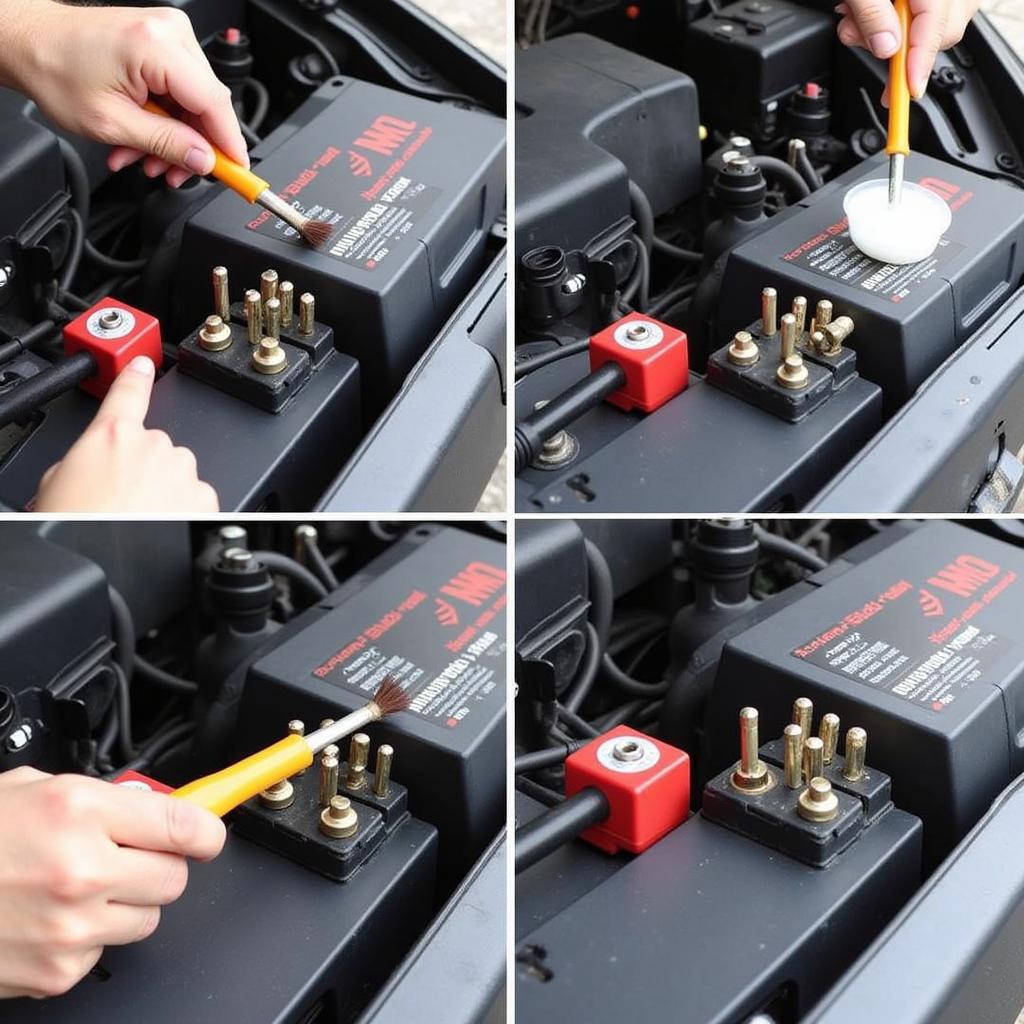The dreaded “elantra battery discharge warning” can be a frustrating experience. This article provides a comprehensive guide to understanding, troubleshooting, and resolving battery discharge issues in your Hyundai Elantra, covering everything from simple checks to more advanced diagnostic techniques.
Understanding Your Elantra’s Battery Discharge Warning
The battery discharge warning light, often a red battery icon on your dashboard, indicates a problem with your Elantra’s electrical system. This doesn’t always mean a faulty battery; it could signify issues with the alternator, parasitic drain, or even corroded terminals. Understanding the potential causes is crucial for effective troubleshooting. A weak battery can lead to starting problems, dimming headlights, and malfunctioning electronic systems. Addressing the issue promptly is key to preventing further complications and ensuring a smooth, reliable driving experience.
Common Causes of Elantra Battery Discharge Warnings
Several factors can contribute to an elantra battery discharge warning. Some common culprits include:
- Failing Alternator: The alternator recharges the battery while the engine runs. A malfunctioning alternator won’t charge the battery properly, leading to a discharge warning.
- Parasitic Drain: Even when your Elantra is off, certain components draw a small amount of power. A faulty component or wiring issue can cause excessive drain, depleting the battery.
- Corroded Battery Terminals: Corrosion on the battery terminals hinders the flow of electricity, effectively weakening the battery’s connection to the car’s electrical system.
- Old or Faulty Battery: Batteries have a limited lifespan. Over time, they lose their ability to hold a charge, eventually triggering the discharge warning.
- Extreme Temperatures: Both extreme heat and cold can affect battery performance. Cold temperatures can slow down chemical reactions within the battery, reducing its capacity, while excessive heat can accelerate battery degradation.
Troubleshooting Your Elantra’s Battery Discharge Warning
Here’s a step-by-step guide to help you pinpoint the source of the problem:
- Check the Battery Terminals: Inspect the battery terminals for corrosion. If present, clean them with a wire brush and baking soda solution.
- Test the Battery Voltage: Use a multimeter to measure the battery voltage. A healthy battery should read around 12.6 volts with the engine off.
- Test the Alternator: With the engine running, the voltage should be around 14 volts. A lower reading suggests a potential alternator problem.
- Check for Parasitic Drain: With the engine off and all accessories turned off, use a multimeter to measure the current draw. A high reading indicates a parasitic drain.
 Elantra Battery Terminal Corrosion Cleaning
Elantra Battery Terminal Corrosion Cleaning
Advanced Diagnostics and Remote Software Solutions
For more complex issues, advanced diagnostic tools and remote software solutions can be incredibly helpful. These tools can pinpoint specific faults within the electrical system and even allow for remote software updates and reprogramming to address certain problems without a physical visit to a mechanic. This is where an automotive electrical specialist with expertise in remote diagnostics and programming can provide valuable assistance. They can analyze data logs, identify software glitches, and implement necessary updates remotely.
Seeking Professional Assistance
While some battery discharge issues can be resolved with simple DIY fixes, others require the expertise of a qualified technician. If you’re uncomfortable working on your car’s electrical system or haven’t been able to identify the problem, it’s best to seek professional help.
Preventing Future Elantra Battery Discharge Warnings
Regular maintenance can help prevent future battery discharge issues. Here are a few tips:
- Have your battery tested regularly, especially in extreme climates.
- Keep the battery terminals clean and free of corrosion.
- Limit the use of accessories when the engine is off.
- Ensure all electrical components are functioning correctly.
“Regular battery checks and terminal cleaning can significantly extend the lifespan of your Elantra’s battery and prevent unexpected discharge issues,” says John Miller, Senior Automotive Electrical Engineer at AutoTech Solutions.
Conclusion
Addressing an elantra battery discharge warning promptly is crucial for maintaining the reliability and performance of your vehicle. By understanding the potential causes and following the troubleshooting steps outlined in this article, you can often identify and resolve the issue yourself. However, for more complex problems, seeking professional assistance and leveraging advanced diagnostic tools and remote software solutions is essential. Don’t let a battery discharge warning ruin your day – take proactive steps to keep your Elantra running smoothly.
FAQs
- How long does an Elantra battery typically last? Elantra batteries generally last between 3 and 5 years, but this can vary based on climate and driving habits.
- Can I jump-start my Elantra if the battery is discharged? Yes, you can jump-start your Elantra using another vehicle or a portable jump starter.
- What is a parasitic drain test? A parasitic drain test measures the current draw from the battery when the car is off, helping identify components drawing excessive power.
- Is it safe to drive with a battery discharge warning? While you might be able to drive for a short distance, it’s not recommended. Continuing to drive with a discharged battery can damage the alternator and other electrical components.
- How much does it cost to replace an Elantra battery? The cost of an Elantra battery replacement varies depending on the battery type and location, but typically ranges from $100 to $300.
- Can remote software updates fix all battery discharge issues? No, remote software updates are effective for addressing software-related problems but won’t fix hardware issues like a faulty alternator or a damaged battery.
- How can I find a qualified technician for remote diagnostics? Search online for “automotive remote diagnostics specialists” or contact your local Hyundai dealership.
“Investing in preventative maintenance, such as regular battery testing, is a cost-effective way to avoid unexpected breakdowns and costly repairs in the long run,” adds Sarah Chen, Lead Technician at Advanced Auto Diagnostics.
